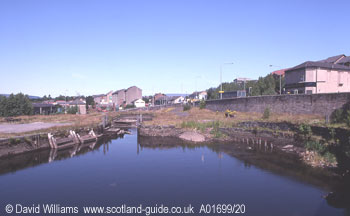After gaining parliamentary approval, the 2m (7 feet) deep canal was started in 1768 at the eastern end, a site which later became the busy port of Grangemouth. As work progressed, there were numerous proposed changes to the route, especially from the Carron Iron Company who were now unhappy at being unable to link their factory to the canal.
By the end of 1771 the canal workings which lay to the east of the summit had been finished and Kirkintilloch was reached in August 1773. Stockingfield was reached in January 1775 but work stopped in July because of a shortage of money. Work restarted, but instead of heading west towards the Clyde, the canal swung southwards and headed towards Glasgow. In November 1777 the canal reached the Hamiltonhill Basin. Work stopped again, this time until 1784.
In June 1785 Robert Whitworth took over from John Smeaton as Chief Engineer and two years later work began on the huge Kelvin Aqueduct. Great progress was now made and the canal headed for the western sea lock at Bowling on the Clyde. The last section of the canal`s Glasgow branch, from Hamiltonhill to Port Dundas, was built in 1786-90.
The canal was officially opened in July 1790 and the occasion was marked by a company boat travelling the 19km (12 miles) from Glasgow to Bowling in four hours. The canal`s total cost was around £330,000, quite a bit above Smeaton`s estimate!
The canal was now 62km (39 miles) long, with a width of 9m (30 feet) at the bottom and 18m (60 feet) at the surface; it was 3m (9½ feet) deep. There were thirty-nine locks, nineteen to the west and twenty to the east of the summit, each of which was about 21m (70 feet) long and 6m (20 feet) wide.
This article is based on the guidebook "The Glasgow Guide".

The building of the canal encouraged industrial development along the banks. This is the Kelvin Dock in Maryhill and it was one of the canal`s first boatyards. On the left is the dry dock and on the right is the slipway.